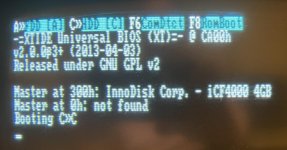1200XL M.U.L.E.
Experienced Member
- Joined
- May 9, 2021
- Messages
- 84
Now that my 5150 has 640kB installed, I am setting my sights on installing a XT-IDE/CF card to use as my storage device. It seems like there are a couple of versions available which integrate a slot bracket.
I see one from Blue Lava on eBay that comes with a 64GB CF card.
https://www.ebay.com/itm/124118342613?hash=item1ce6079bd5:g:vLQAAOSwAkZebZd B
I see another on eBay called XT-CF Lite.
https://www.ebay.com/itm/224546590178?hash=item3448050de2:g:yLcAAOSwlTJhIdEm
There is also the Lo Tech design sold by Texelec.
https://www.ebay.com/itm/284431651859?hash=item4239729413:g:tG0AAOSw7w1hLWtd
I'm leaning toward either the Blue Lava or the XT-CF Lite card since it would only use one slot whereas the Lo Tech solution would use up two slots. But, maybe that is the wrong reason to favor the first two?
Is any one of these "better" than the others if I all I am looking for is a simple storage solution? Any recommendations?
Thanks!
I see one from Blue Lava on eBay that comes with a 64GB CF card.
https://www.ebay.com/itm/124118342613?hash=item1ce6079bd5:g:vLQAAOSwAkZebZd B
I see another on eBay called XT-CF Lite.
https://www.ebay.com/itm/224546590178?hash=item3448050de2:g:yLcAAOSwlTJhIdEm
There is also the Lo Tech design sold by Texelec.
https://www.ebay.com/itm/284431651859?hash=item4239729413:g:tG0AAOSw7w1hLWtd
I'm leaning toward either the Blue Lava or the XT-CF Lite card since it would only use one slot whereas the Lo Tech solution would use up two slots. But, maybe that is the wrong reason to favor the first two?
Is any one of these "better" than the others if I all I am looking for is a simple storage solution? Any recommendations?
Thanks!

